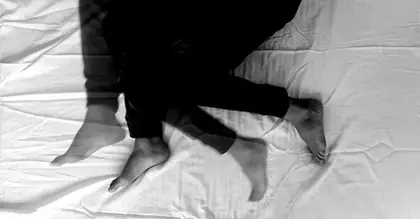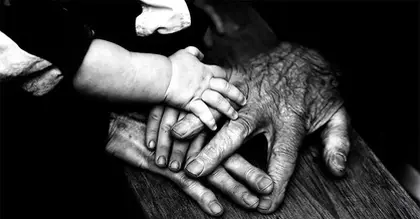
- In a new study, psilocybin from so-called magic mushrooms showed better results fighting depression than a placebo, niacin, or microdoses of psychedelics.
- Researchers also reported that psilocybin showed greater effects on people with secondary depression related to an underlying disease.
- They did note that the findings were limited due to a lack of diversity among study participants.
A
Published inThe BMJ, the peer-reviewed research states that psilocybin was a more effective treatment of depression symptoms among study participants than a placebo, niacin (vitamin B), or microdoses of psychedelics.
The study authors said in a statement that depression affects an estimated 300 million people worldwide and is a leading cause of disability.
Researchers said psilocybin has shown promise in reducing symptoms of depression after one or two doses with few side effects and no current evidence that the substance causes addiction.
They also said published studies to date haven’t examined factors that could moderate psilocybin’s effects, including dosage, type of depression, past use of psychedelics, and publication biases.
The team of UK researchers searched databases for randomized controlled trials comparing psilocybin as a depression treatment to other substances.
They also looked at studies where psychotherapy was used under both the experimental and the control conditions to distinguish psilocybin’s effects from those produced by psychotherapy. They settled on seven trials relevant for their analysis that involved 436 subjects with depression (52% were female and 90% were white).
The researchers measured changes in depression scores using a statistical method called Hedges’ g. A Hedges’ g score of 0.2 indicates a small effect, 0.5 a moderate effect, and 0.8 or more a large effect.
The researchers reported that after psilocybin treatments the change in depression scores was significantly greater than those shown by a proven comparator treatment, with an overall Hedge’s g of 1.64 – a score that indicates a large effect favoring psilocybin.
Further analysis showed greater improvements with secondary depression (related to an underlying disease) than primary depression, assessed with a self-reported scale rather than a clinician-assessed scale. Older age and previous use of psychedelics were also correlated with greater improvements.
The study authors said high levels of variation between trials resulted in a low certainty of evidence to support a strong antidepressant effect of psilocybin. Generalizability of findings was limited by the lack of diversity in study participants.
The researchers also said pre-treatment expectations and the extent to which participants knew they were being treated with psilocybin or a placebo were also not measured. In clinical trials, people receive psilocybin in a calm comfortable room with soothing music and supervised by a psychotherapist, a situation the researchers said was unlikely to be achievable in a healthcare system.
The scientists concluded that although their findings are encouraging for psilocybin’s potential as an effective antidepressant, issues such as legal safeguards as well as cost and lack of regulatory guidelines need to be dealt with before psilocybin can be established in clinical practice.
Researchers not connected to the study said in an accompanying editorial that the research didn’t answer questions such as those about psilocybin’s effectiveness under “real world” conditions. They said more information about potential effect modifiers is necessary, which could be delivered by pragmatic clinical trials and real world data.
The editorial authors also said there’s still debate as to whether psychedelics can express antidepressant activity on their own rather than in concert with specific forms of psychotherapy.
They added that as with all analyses using aggregate data they couldn’t differentiate between individuals most likely to benefit from psilocybin and those who might instead experience adverse events.
They concluded the study’s findings “support a prudent approach in both scholarly and public settings because more and better evidence is needed before any clinical recommendation can be made about therapeutic use of psilocybin.”
Dr. Akanksha Sharma is a neurologist, neuro-oncologist and palliative medicine practitioner at the Pacific Neuroscience Institute in Santa Monica, California.
Sharma, who wasn’t involved in the research, told Medical News Today that there’s still much to be learned about how psychedelics such as psilocybin change the brain.
“At this point, we know that altered states of consciousness can help patients face and process difficult emotions associated with their mental health condition or disease,” Sharma said. “In this state with the right guides, we can potentially reframe and accept our condition or find peace. These agents can contribute to neuro-plasticity, which means that our brain can make new connections and change the way it is responding to stress and negative emotions.”
Sharma said psychedelics can shift perspective and help people think differently about life and death and bring spiritual peace and acceptance, which can be helpful for people experiencing cancer and depression.
However, there are also downsides to treatments such as psilocybin.
“We still have a lot to learn regarding how it works and how it affects us so there is always inherent risk with that,” Sharma said. “Opening our mind and heart in this manner cannot be done without expert therapists and support. Patients should be guided through this otherwise they can experience anxiety, panic, confusion, and can have high blood pressure, and cardiac side effects they may not be able to manage. We also don’t yet know any long-term effects.”
Amy Reichelt, the chief innovation officer at PurMinds Neuropharma in Ontario, Canada, who wasn’t involved in the research, noted that the study showed the effects of psilocybin treatment was much larger in those with secondary depression compared to primary depression.
However, she said it was important to consider that the people with secondary depression were self-reporting symptoms as opposed to a more stringent clinician administered scale.
“Also, the root cause of secondary depression likely differs from primary depression with the secondary depression patients enrolled in the clinical trials experiencing depression as a manifestation of their struggle with anxiety around death from their diagnosis of a life-threatening illness,” Reichelt told Medical News Today.
She said the “
“As the psilocybin was administered as part of a therapeutic program that also includes therapy, some of the variance may be attributed to the patient-therapist relationship that was provided as psychological support,” Reichelt said. “However in these studies the placebo control group also received therapy.”
She added that a dose response effect was also shown with higher doses (20 to 25mg) showing greater effectiveness than lower dose (10 to 15mg), which indicates the more pronounced hallucinogenic effects generated by a high dose of psilocybin.
“The studies with secondary depression used one dose of psilocybin whereas the studies with primary depression used two high doses or one high dose of psilocybin,” Reichelt said. “Again, the greater effect size in secondary depression compared to primary depression may be due to a greater severity and duration of depressive symptoms in the primary depression patients, and that the secondary depression patients were experiencing a more situational depression.”





